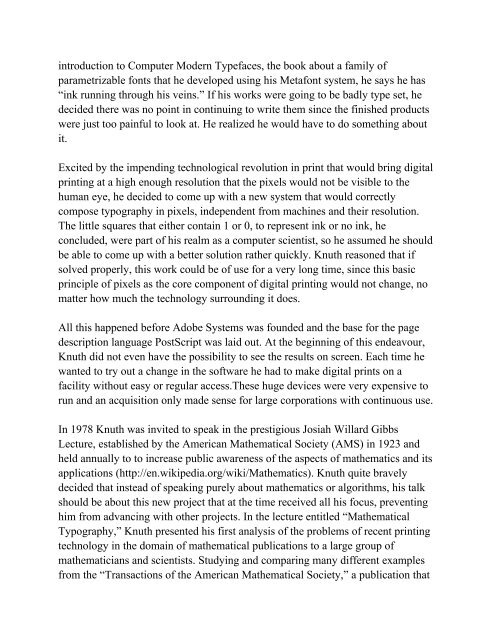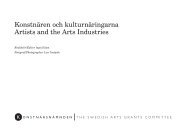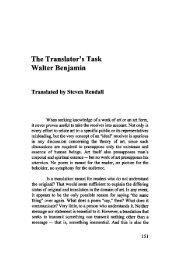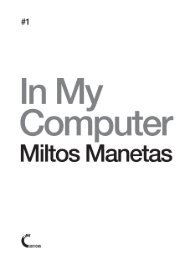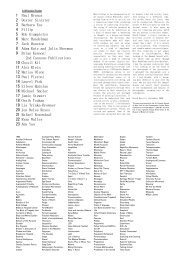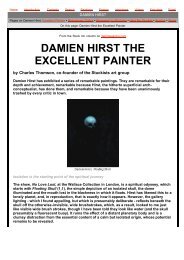Jürg Lehni – Typeface As Progamme - Harald Peter Ström
Jürg Lehni – Typeface As Progamme - Harald Peter Ström
Jürg Lehni – Typeface As Progamme - Harald Peter Ström
Create successful ePaper yourself
Turn your PDF publications into a flip-book with our unique Google optimized e-Paper software.
introduction to Computer Modern <strong>Typeface</strong>s, the book about a family of<br />
parametrizable fonts that he developed using his Metafont system, he says he has<br />
“ink running through his veins.” If his works were going to be badly type set, he<br />
decided there was no point in continuing to write them since the finished products<br />
were just too painful to look at. He realized he would have to do something about<br />
it.<br />
Excited by the impending technological revolution in print that would bring digital<br />
printing at a high enough resolution that the pixels would not be visible to the<br />
human eye, he decided to come up with a new system that would correctly<br />
compose typography in pixels, independent from machines and their resolution.<br />
The little squares that either contain 1 or 0, to represent ink or no ink, he<br />
concluded, were part of his realm as a computer scientist, so he assumed he should<br />
be able to come up with a better solution rather quickly. Knuth reasoned that if<br />
solved properly, this work could be of use for a very long time, since this basic<br />
principle of pixels as the core component of digital printing would not change, no<br />
matter how much the technology surrounding it does.<br />
All this happened before Adobe Systems was founded and the base for the page<br />
description language PostScript was laid out. At the beginning of this endeavour,<br />
Knuth did not even have the possibility to see the results on screen. Each time he<br />
wanted to try out a change in the software he had to make digital prints on a<br />
facility without easy or regular access.These huge devices were very expensive to<br />
run and an acquisition only made sense for large corporations with continuous use.<br />
In 1978 Knuth was invited to speak in the prestigious Josiah Willard Gibbs<br />
Lecture, established by the American Mathematical Society (AMS) in 1923 and<br />
held annually to to increase public awareness of the aspects of mathematics and its<br />
applications (http://en.wikipedia.org/wiki/Mathematics). Knuth quite bravely<br />
decided that instead of speaking purely about mathematics or algorithms, his talk<br />
should be about this new project that at the time received all his focus, preventing<br />
him from advancing with other projects. In the lecture entitled “Mathematical<br />
Typography,” Knuth presented his first analysis of the problems of recent printing<br />
technology in the domain of mathematical publications to a large group of<br />
mathematicians and scientists. Studying and comparing many different examples<br />
from the “Transactions of the American Mathematical Society,” a publication that


